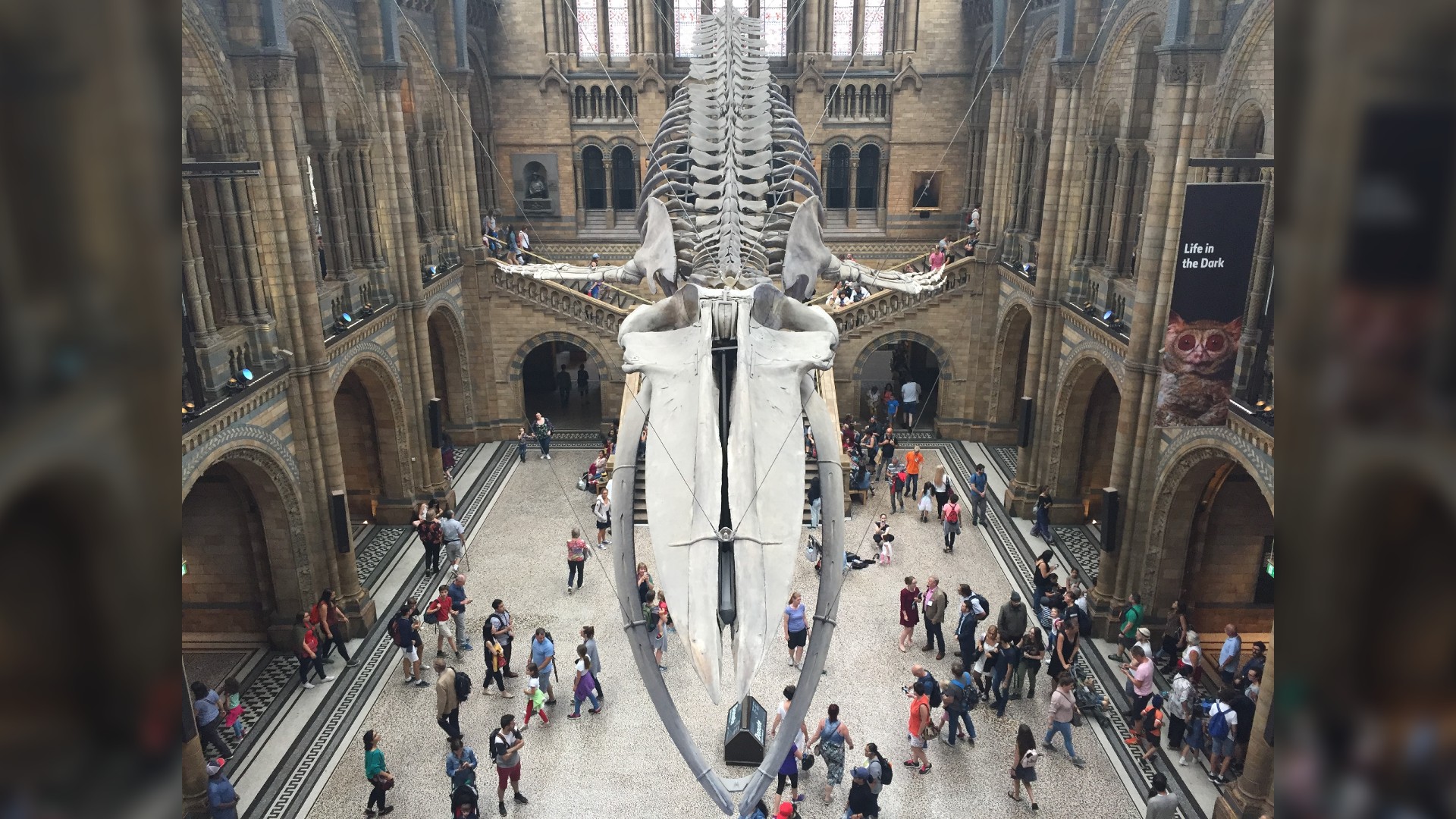
Which animal has the largest head?
Relative to body size?

Animals come in all shapes and sizes, from the smallest beetle to the largest whale. With such a vast variety of creatures, which one of Earth's millions of animal species has the biggest head? And which of these many species has the largest head relative to its body size?
Blue whales (Balaenoptera musculus) are the largest known animals that have ever existed. The largest blue whales (the females) can stretch up to 110 feet (34 meters) long from snout to fluke, according to the National Oceanic and Atmospheric Administration (NOAA) Fisheries. That's 2.5 yellow school buses end to end. At 18 feet (5.5 m) long, a blue whale’s skull, which makes up less than a quarter of its body, is the scaffolding for the largest known animal head on the planet.
Scientists think that blue whales — and other whale species, such as bowhead whales (Balaena mysticetus), whose skulls can measure up to 16.5 feet (5 m) — evolved huge heads and mouths so they could eat as much as possible in one gulp. Blue whales, bowhead whales and other baleen whales consume prey by "lunge-feeding," in which they accelerate forward with open mouths and engulf as much prey and water as they can. Then, the whales push the seawater out of their mouths through the bristle-like baleen, which catch krill and other prey. Bowhead whales actually win the prize for largest mouth in the animal kingdom: A bowhead whale's mouth can take up 25 feet (7.6 m) of the whale's entire 65-foot-long (20 m) body.
Related: Which animal has the largest brain relative to its body size?

It’s more challenging to work out which animal has the largest head relative to its body size. The animal kingdom is vast, and there may be millions of species that scientists have yet to discover. There are also animals like octopuses — such as dumbo octopuses (Grimpoteuthis) — whose bodies aren't clearly laid out in a way that makes it obvious what a "head" even is. Octopuses have a head-like structure called a mantle, plus eight squiggly arms. But their mantles store all their organs, plus a brain (and each arm has its own nerve cells that give the arms a sort of mind of their own). From the outside, the mantle looks like a head, but because it holds not just their brain but also the rest of their organs, can it be considered a head?
But the insect world might hold the answer as to which species has the biggest head relative to body size. Bruno de Medeiros, assistant curator of pollinating insects at the Field Museum of Natural History in Chicago, suggested several insects that could be contenders.
De Medeiros first suggested insects with "big, bulky heads full of jaw muscles," such as soldier termites or leaf-cutter ants, whose heads account for around half their bodies.
Sign up for the Live Science daily newsletter now
Get the world’s most fascinating discoveries delivered straight to your inbox.
Then there are the insects with "very wide heads," de Medeiros said, like stalk-eyed flies in the family Diopsidae. The eyes help males "in male-to-male contests to pretend they are bigger than their opponents," he said. In the genus Cyrtodiopsis, some of the flies' heads are twice as wide as their bodies are long.
But perhaps the clear winners in the insect world are female South American cycad weevils (Antliarhinus zamiae). These weevils are named for the plants they pollinate — cycads — which have thrived since the dinosaur era and look sort of like short, stubby palm trees.
"[Cycad weevils] have this snout that can be over two times as long as the rest of the body," de Medeiros said. 'Snout' in this case is a layman's term for the structure, called a rostrum, protruding from the insect's head. While the weevil’s body (minus the head) generally measures around 0.39 inches (1 centimeter), its rostrum alone can stretch to up to 0.79 inches (2 cm). The rostrum hosts the weevil's eyes and antennae and carries mandibles (its mouthparts) at the very tip. Jaw muscles at the base of the rostrum control the mandibles, which the weevil uses to eat seeds or bore holes into plants to lay eggs in.
There may be another animal out there with a bigger head relative to its body size, but for now, the cycad weevil takes the crown.
Originally published on Live Science.

JoAnna Wendel is a freelance science writer living in Portland, Oregon. She mainly covers Earth and planetary science but also loves the ocean, invertebrates, lichen and moss. JoAnna's work has appeared in Eos, Smithsonian Magazine, Knowable Magazine, Popular Science and more. JoAnna is also a science cartoonist and has published comics with Gizmodo, NASA, Science News for Students and more. She graduated from the University of Oregon with a degree in general sciences because she couldn't decide on her favorite area of science. In her spare time, JoAnna likes to hike, read, paint, do crossword puzzles and hang out with her cat, Pancake.









